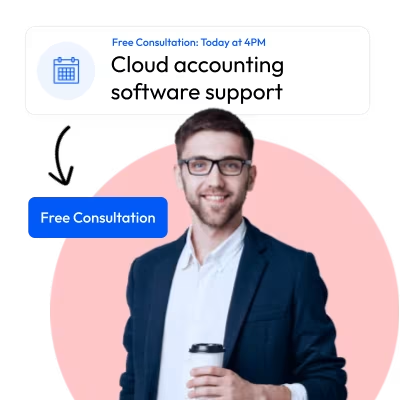Contents
IntroductionReaping the benefits of online accounting solutionsTips for switching from spreadsheets to online accounting
Introduction
With the rollout of Making Tax Digital (MTD) in April 2019, it has become mandatory for all VAT-registered businesses to keep their financial records in digital format, and submit their VAT returns using MTD-compatible software.
While you can continue to use spreadsheets for your business records, you'll need bridging software to make them MTD-compatible. Here's a quick explanation of the term: bridging software is a tool that takes data from your spreadsheet, and "translates" the information digital in the correct format to HMRC's system.
Sounds complex?
Perhaps it's time to look into online accounting solutions that can manage your VAT processes within a single system.
<p>With the rollout of <a href="https://www.gov.uk/government/publications/making-tax-digital-how-vat-businesses-and-other-vat-entities-can-get-ready/making-tax-digital-how-vat-businesses-and-other-vat-entities-can-get-ready" target="_blank">Making Tax Digital (MTD)</a> in April 2019, it has become mandatory for all VAT-registered businesses to keep their financial records in digital format, and submit their VAT returns using MTD-compatible software.<br></p><p>While you can continue to <a href="https://www.gov.uk/government/publications/making-tax-digital-how-vat-businesses-and-other-vat-entities-can-get-ready/making-tax-digital-how-vat-businesses-and-other-vat-entities-can-get-ready#using-spreadsheets-for-your-business-records" target="_blank">use spreadsheets for your business records</a>, you'll need bridging software to make them MTD-compatible. Here's a quick explanation of the term: <strong>bridging software</strong> is a tool that takes data from your spreadsheet, and "translates" the information digital in the correct format to HMRC's system.</p><p>Sounds complex? </p><p>Perhaps it's time to look into online accounting solutions that can manage your VAT processes within a single system.</p>
Reaping the benefits of online accounting solutions
In addition to being MTD-compatible, online accounting software offers important benefits to small business owners and self-employed persons.
These include:
- Immediacy: Your accounting data entry is kept up-to-date, which means that you’ll get an accurate view of your business finances at any time.
- Accuracy: The software performs the calculations, thereby reducing the occurrence of human error.
- Mobility: You’ll be able to access your accounts, and perform a wide range of functions over multiple devices and locations.
- Actionable reports: Unlike spreadsheets, reports can be quickly generated on accounting software due to its built-in reporting and analysis tools.
- Organisation and centralisation: Beyond accounting, your software is able to perform multiple functions, such as inventory management, payroll, customer relationship management and more.
- It also ensures that all your data and information is stored securely within a single system.
If you’re ready to make the switch, read on for our top tips for making your transition to the cloud a smoother process:
Tips for switching from spreadsheets to online accounting
1. Pick the right time to transition to cloud accounting
The end of the financial year seems to be the obvious option for making the switch to an accounting software.
However, the year-end can be a busy time for small businesses—and this can make it challenging for business owners to allocate sufficient time to prepare their data and test out the new system.
As such, a better option could be to make the switch during your slower months. This can be the month-end, quarter-end or an accounting period that offers a clean cutoff date between the two systems.
2. Decide between moving your accounting history or entering opening balances
Should you import all your historical data, or start anew with opening balances? This can be complex, so if you’re unsure, it’s best to consult an accountant.
In most instances, it isn’t necessary to move your entire accounting history to your new software, as it’s unlikely that you’ll need to refer to past information often. Typically, it’s recommended that you export your accounting history to a backup file, and transfer only uncleared transactions to the new software.
3. Prepare your data
Different accounting software support different formats, and your software of choice will have specifications for text limits, column headings, how the date is formatted, and more.
You need to ensure that your data is free of error, and saved in the required format. Test this out by starting by transferring the first few rows of data, and check that your format is correct before you proceed with transferring the remaining data.
But before you transfer your data, it’s important that you take the time to review and clean up your current accounting records. This includes duplicate vendor records, inventory errors, lost records, calculation errors and more.
There are three steps to the cleanup process:
- Perform a thorough review: Review your chart of accounts, customer list, vendor list, inventory list, employee lists and other lists you may have to correct any duplicates or discrepancies.
- Do an audit: Audit accounts on your trial balance.
- Seek advice from a professional: By engaging an accountant to review your work, you’ll ensure that proper accounting procedures and regulations are being followed for your business, as well as gain advice on how you can keep your books clean moving forward.
4. Keep both systems running
Run your old and new accounting systems concurrently for a period of time, until you can be sure that your new system is running smoothly.
Depending on the size of your company and the complexity of your systems and processes, you may need to run both systems for a few days, a week or even longer.
5. Make time to learn and test out your new accounting software
It’s essential that you carve out time from your schedule to get familiar with the new accounting software.
Review the training materials or guides published by your accounting provider, and don’t hesitate to get in touch with their support team if needed.
There will be new features and functions that you’re completely new to—but the more you invest in learning about the software, the more benefits you’ll reap for your business.




































.png)

